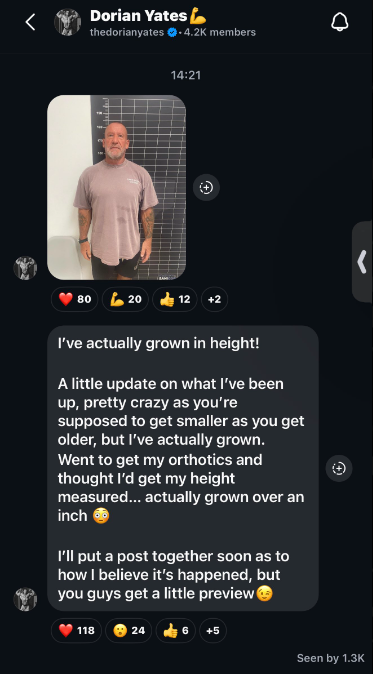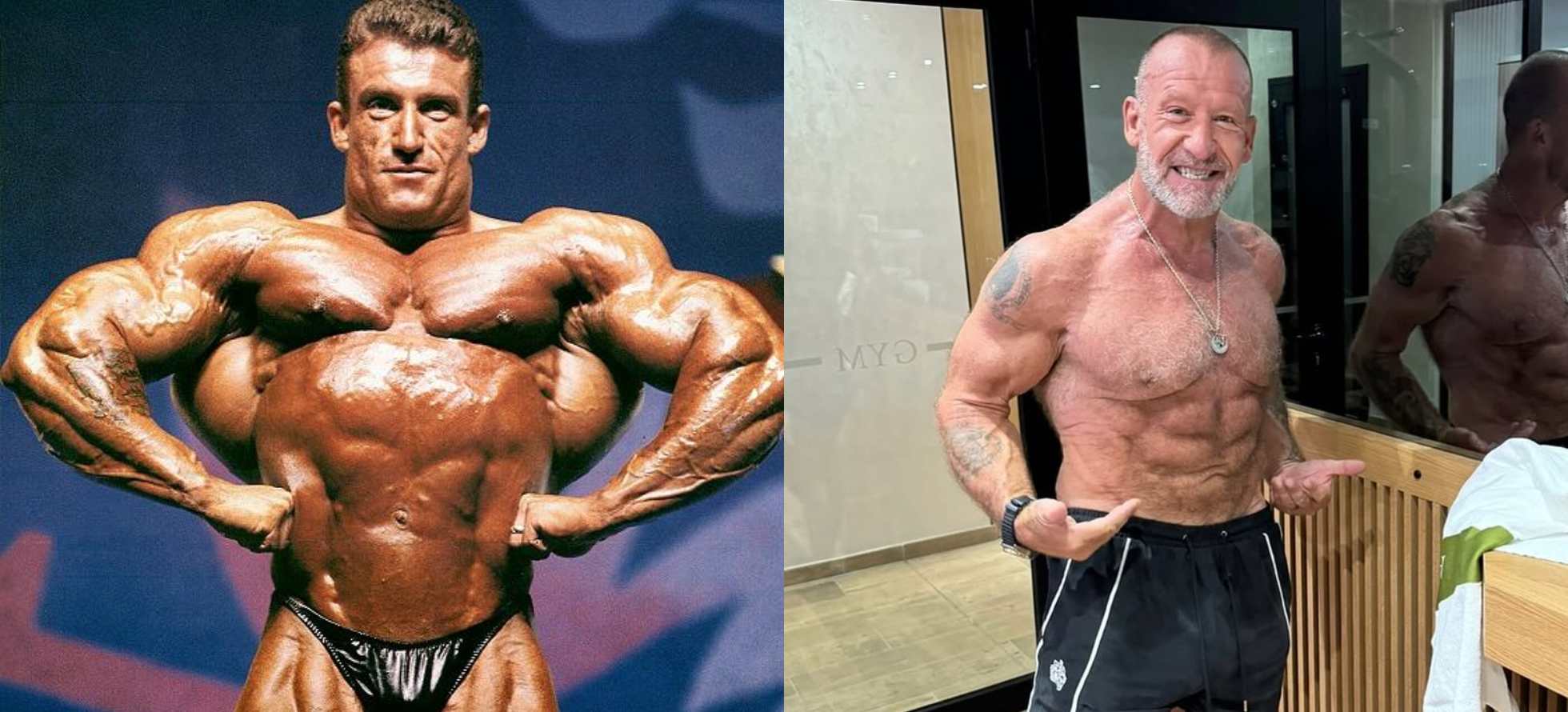At an age when most people are bracing themselves for the inevitable shrinkage that comes with getting older, six-time Mr. Olympia champion Dorian Yates has dropped a bombshell that’s turning conventional wisdom on its head. The bodybuilding legend, now 63, recently announced that he’s actually grown over an inch in height.
The former champion shared the surprising news through his social media channels. During a routine visit to get orthotics adjusted, Yates decided to have his height measured and discovered something unexpected. The measurement showed he had gained more than an inch, defying the typical pattern of age-related height loss.
“I’ve actually grown in height!” Yates announced, clearly excited about the discovery. He acknowledged the peculiarity of his situation, noting that “you’re supposed to get smaller as you get older, but I’ve actually grown.”

The announcement has generated widespread discussion among fitness enthusiasts and professionals alike. Social media erupted with reactions ranging from hopeful to skeptical, with many questioning whether such a feat was genuinely possible or what might explain it. Some speculated about various factors, from specialized training methods to peptide use, while others suggested more mundane explanations involving footwear inserts.
What makes Yates’ claim particularly credible to many is his reputation for integrity and his decades-long commitment to understanding the science behind physical transformation. This isn’t someone prone to exaggeration or seeking attention through outlandish claims.
Yates promised to provide a detailed explanation of how he believes this growth occurred, giving his followers “a little preview” of what’s to come. While he hasn’t yet released his full theory, the development appears connected to his post-competition training philosophy, which emphasizes sustainability and health over pure performance.
Since retiring from professional bodybuilding, Yates has completely overhauled his approach to fitness and nutrition. In a recent interview, he discussed how competing at the highest level required sacrifices that were fundamentally incompatible with long-term health. “To be the best is in no way a balanced situation,” he explained, before posing a critical question: “How do we get the benefits of exercise without the negatives?”
His current training regimen focuses heavily on functional movements and exercises that promote longevity rather than simply building maximum muscle mass. He’s become an advocate for farmer’s walks and recommends hanging from a pull-up bar to realign the shoulders and improve grip strength.
The bodybuilding icon has also become vocal about the dangers of excessive training, comparing exercise to medicine that requires proper dosing. “Too much exercise is not healthy,” he cautioned. “Look at exercise as a medicine…what’s the effective dose before getting all these side effects?”
This philosophy extends to his cardiovascular training, where he’s embraced high-intensity interval work over prolonged moderate-intensity sessions. Yates has suggested that brief, intense efforts can deliver comparable benefits to much longer workouts, potentially with less wear and tear on the joints and spine.
On the nutrition front, Yates follows a primarily ketogenic and animal-based diet, though he’s far from dogmatic about it. He practices what he calls an 80/20 rule—maintaining strict nutritional discipline 80 percent of the time while allowing flexibility for the remaining 20 percent. This balanced approach, he believes, is far more sustainable than the rigid dietary protocols required during his competitive years.
The reaction to Yates’ height revelation has been particularly enthusiastic among those who’ve experienced similar, if smaller, changes. Several people responded by sharing their own stories of gaining height through improved posture, weight loss, or specific training modalities like yoga and specialized movement patterns.
From a physiological standpoint, gaining height in one’s sixties isn’t impossible, though it certainly defies typical aging patterns. Most adults experience gradual height loss due to spinal disc compression, postural changes, and decreased bone density. However, interventions that decompress the spine, improve posture, and strengthen supporting musculature can potentially reverse some of this loss.
The vertebral column contains numerous intervertebral discs that can compress over time due to gravity, poor posture, and the cumulative effects of years of loading. Practices that stretch and decompress the spine—such as hanging exercises, certain yoga poses, and specialized movement training—can potentially restore some of the space between vertebrae, leading to measurable height increases.
What makes Yates’ case particularly intriguing is the magnitude of the change he’s reporting. An inch of height gain at his age would represent a significant reversal of typical aging patterns.


